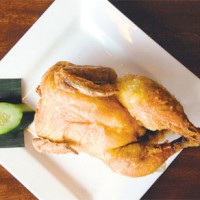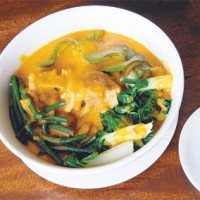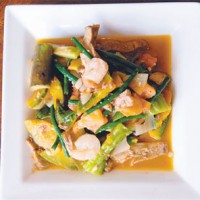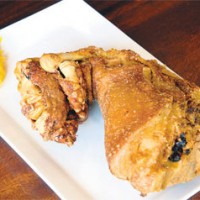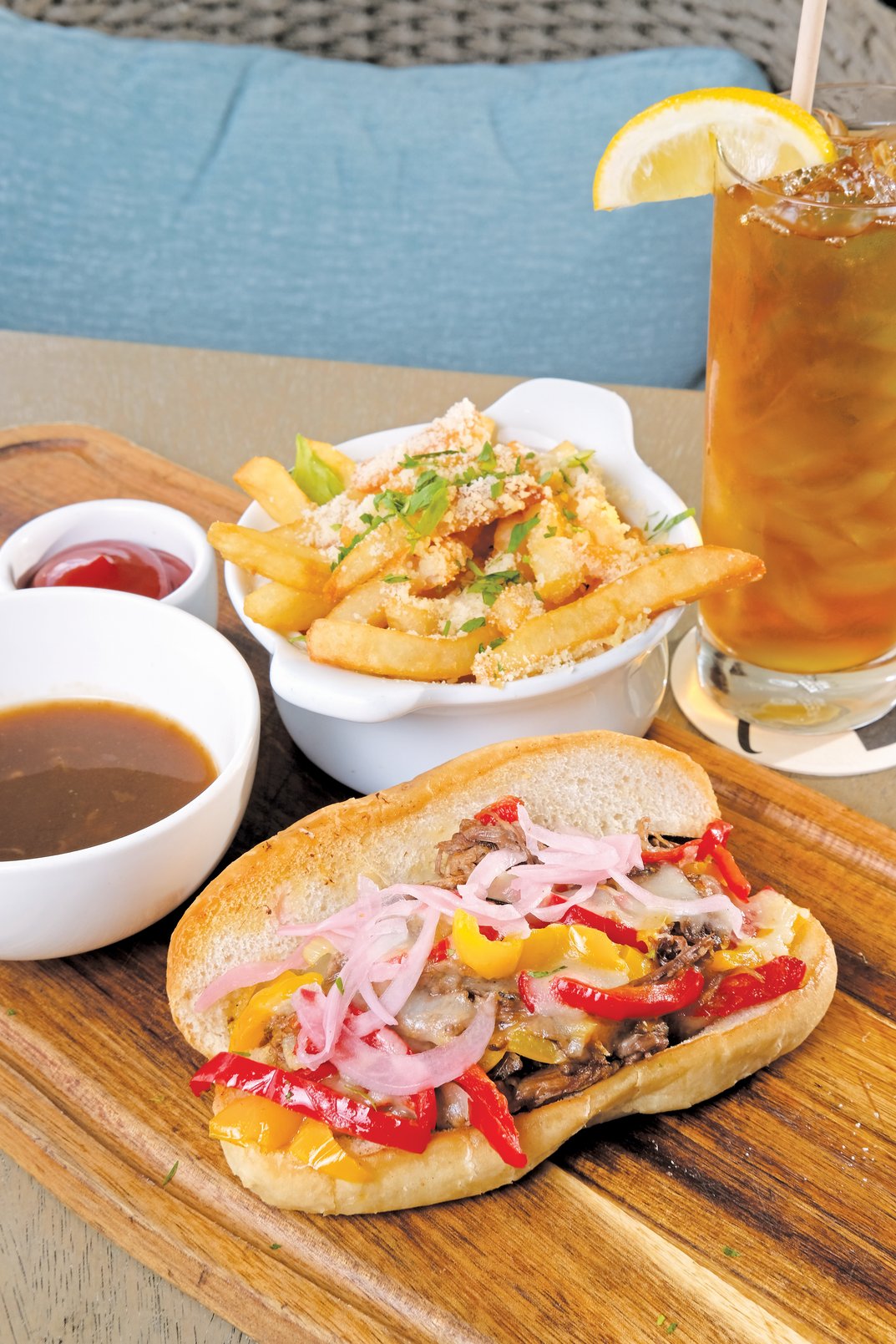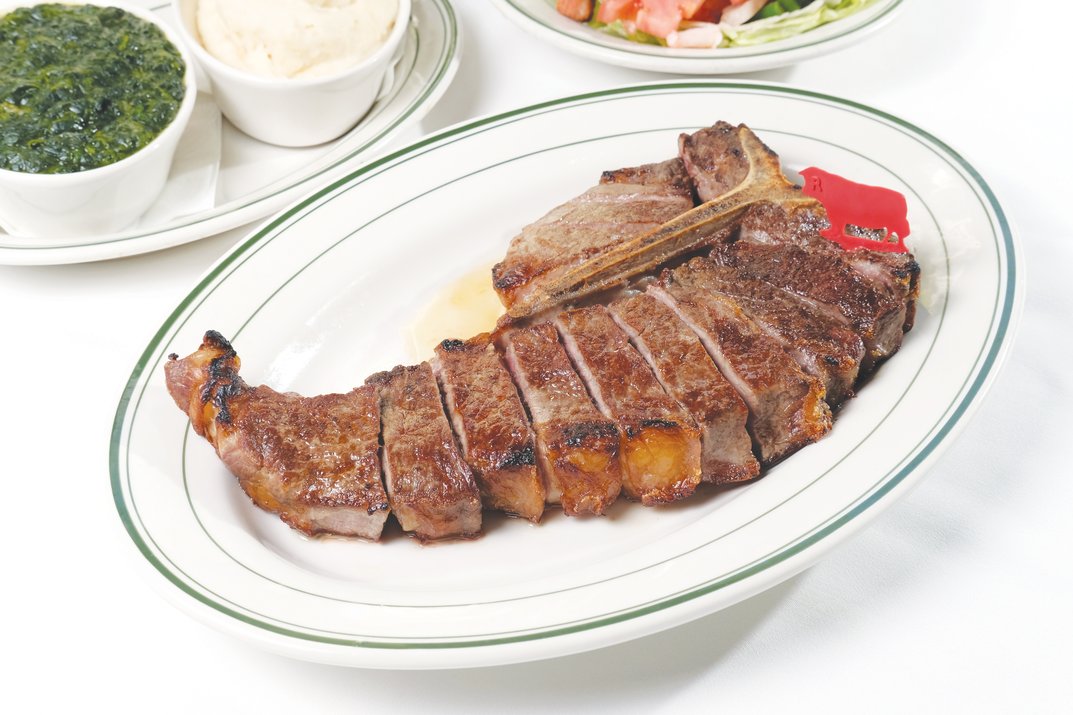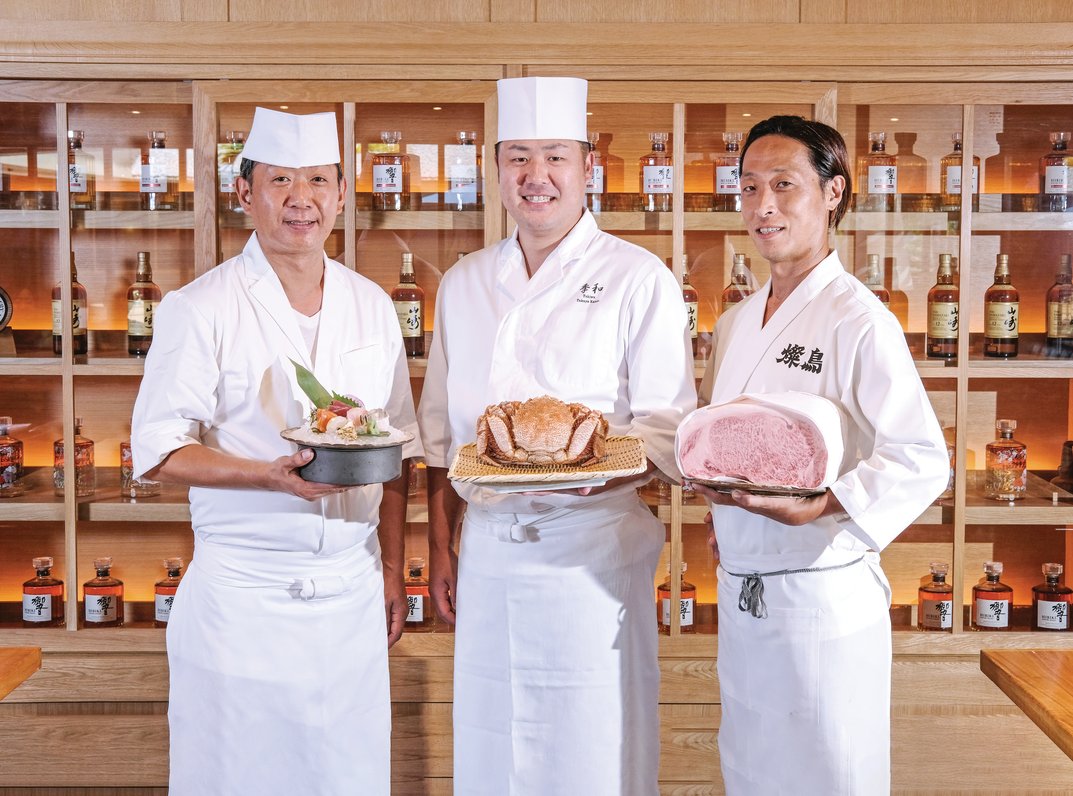‘The House That Fried Chicken Built’
Features Inside FeatureFebruary 20, 2011
Story By: Dining Out Team |
One bite of the fried chicken at Max’s of Manila and you’ll know why the restaurant is known as “the house that fried chicken built.” Juicy, tender and oh, so crispy, the chicken is lightly cooked to mouth-watering perfection from a special recipe that literally helped create what is today a Filipino food institution.
 Chef Gregorio Delos Santos, at left, holds a dish of Pancit Canton and Max's famous Fried Chicken, while chef Nestor Manimtim holds the Lumpiang Ubod.
Chef Gregorio Delos Santos, at left, holds a dish of Pancit Canton and Max's famous Fried Chicken, while chef Nestor Manimtim holds the Lumpiang Ubod. Pancit Canton ($7.95)
Pancit Canton ($7.95) Max's Fried Chicken ($13.50)
Max's Fried Chicken ($13.50) Kare-Kare Bagoon ($11.95)
Kare-Kare Bagoon ($11.95) Fresh Lumpiang Ubod ($5.95)
Fresh Lumpiang Ubod ($5.95) Pinakbet ($8.95)
Pinakbet ($8.95) Full-size Crispy Pata ($16.95)
Full-size Crispy Pata ($16.95)
“It’s prepared just a little special,” says Maly San Luis, managing director of Max’s Hawaii. “That’s how it all started.”
The Max’s story begins in 1945 when Maximo Gimenez, a Stanford-educated teacher, befriended a group of American occupation troops stationed at Quezon City in the Philippines. The GIs regularly visited Maximo’s nearby home for a drink or two, and after some time insisted they repay their host for his generosity. This prompted Maximo to open a cafe, where his niece Ruby managed the kitchen and served a very simple, but very popular fried chicken. News traveled fast concerning the delicious dish and soon people from all over were flocking to Max’s for a taste of the house specialty.
Today the little cafe has expanded into a full-fledged restaurant empire, with more than 120 locations in the Philippines, U.S. and Canada, with plans to branch out to Dubai and Australia later this year.
“The grandchildren of Ruby and the grandchildren of Max are the ones currently running the franchising, and now they’re looking for growth outside of the Philippines,” San Luis says of the 65-year-old business.
On Oahu, locals are fortunate to have two Max’s. The first opened in 2006 in the Waipahu Shopping Plaza. The public’s response was so overwhelmingly positive that a second outlet was added last year in town, right across the parking lot from Costco Iwilei.
“So far it’s been going well,” says San Luis of the Dillingham restaurant. “The type of food that they order is pretty much the same, but we’re getting a lot of non-Filipinos in town. We’re getting a lot of first-timers venturing out, and the feedback that we’re getting is (the food) is not as foreign as they had expected.”
According to San Luis, Filipino food is a cross of Spanish, Chinese and Malay cuisine, taking the best from all three styles to form a truly unique and tasty food experience.
“But sometimes when people come in for the first time, they can feel a little intimidated and not know where to start,” she admits of the expansive menu that, in addition to that famous fried chicken ($7.95 for half, $13.50 whole), also has a large offering of traditional Filipino dishes done with homey twist.
“Our core menu are the traditional Filipino dishes, but we try to come up with new things all the time, and that’s where we throw in the twist,” San Luis explains. “Like the Pinakbet, that’s a very common vegetable dish, but we kind of do a twist ON the shrimp base — that’s done special by the chef — so you can’t just go to the market and buy a bottle (of the sauce).
“And that’s one of our secrets, to have that authentic cooking,” she adds. “Our chefs are actually from the Philippines. One has been with Max’s for 15 years, the other has been with Max’s for 18.”
For newbies to the house of Max, San Luis suggests beginning with one of the house specialties, like Kare-Kare ($11.95/$18.95), a hearty stew of tender oxtail, beef shank and vegetables swimming in a rich peanut sauce. A lively shrimp paste is served on the side for an added flavor kick.
Another native delicacy (and San Luis’ personal favorite) is the Crispy Pata ($12.95/$16.95), pork knuckles simmered in a special marinade and deep-fried to golden perfection.
Other popular items to try include Pancit Canton ($7.95), Pinakbet ($8.95), Sinigang na Hipon ($8.50/$13.95), Chicken or Pork Adobo ($8.95), Halo-Halo ($5.50) and Lumpia, which range from the traditional Lumpiang Shanghai ($6.95) to the more modern Lumpiang Ubod ($5.95).
“It’s made out of coconut palm, almost like a heart of palm salad, and it’s chopped up, stir-fried, seasoned and then wrapped in a fresh crepe wrapper. It’s not deep-fried so it’s healthier and a lot fresher,” San Luis explains.
“There’s a vast menu,” she adds, “but this is always a good place to start.”
Portions are plentiful, even for a regular order, so it’s a good idea to bring along a friend or two to share in the bounty.
Or enjoy a complete feast for one with one of Max’s six combo plates. Each meal comes with a leg of Max’s chicken, choice of rice (steamed white, brown or garlic) and combination of sides. Prices range from $5.95 (Max’s Basic — chicken leg, choice of rice) to $9.50 (Max’s Chicken Dinner — half serving of chicken, choice of rice or french fries, soup of the day or tossed salad, and dessert).
“There’s some that come with noodles, some that come with lumpia, chop suey,” San Luis says. “Special ingredients here and there … We try to do a little something extra than the normal.”
Max’s of Manila
- Where
- 801 Dillingham Boulevard
- Honolulu, HI 96817
- 94-300 Farrington Highway Suite F-1
- Waipahu, HI 96797
- Call
- (808) 951-6297
- Hours
- Dillingham
- Open daily
- 11 a.m. – 9 p.m.
- Waipahu
- 11 a.m. – 9 p.m.
- Monday – Thursday
- 11 a.m. – 10 p.m.
- Fridays and Saturdays
- 9 a.m. – 9 p.m.
- Sundays







